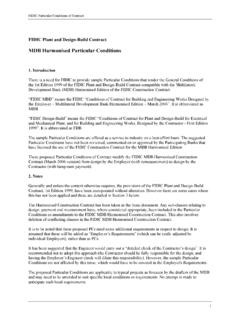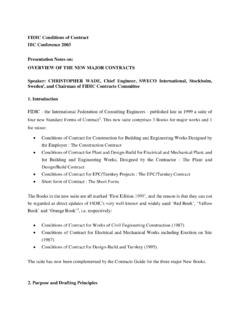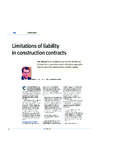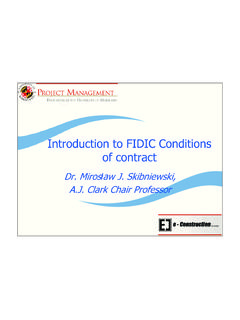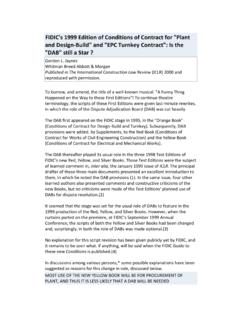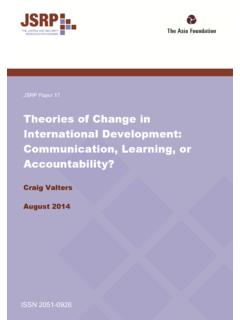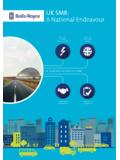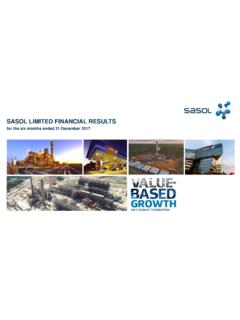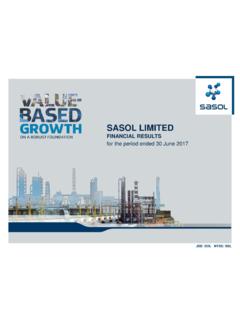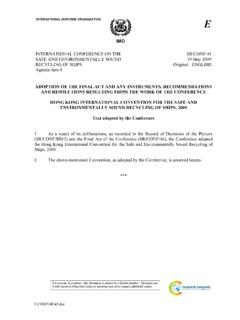Transcription of Article
1 ArticleWorlds Apart: EPC and EPCM Contracts: Risk issues and allocationBy Phil Loots and Nick Henchie November 2007 Worlds Apart: EPC and EPCM Contracts: Risk issues and allocationBy Phil Loots and Nick Henchie2 IntroductionFor many years now it seems that the most desired way for an Owner to procure a major construction project, particularly one being project financed, was via a fixed price, lump sum turnkey route; the so called engineering, procurement and construction contract ( EPC contract ). By this route, funders and Owners expect to get the degree of certainty as to time and costs that they require. Such has been the popularity of this method of procurement that organisations such as FIDIC responded to the need for appropriate standard forms that more closely reflected market conditions by, for example, the introduction of its Conditions of Contract for EPC/Turnkey Contracts (the Silver Book).
2 Orgalime and ICC followed suit to join other standard forms produced by organisations such as ENAA , ICE7 and ECC . Most recently, FIDIC has responded to the requirements of the major development banks by introducing the MDB Harmonised contract which contains certain amendments agreed with the multi lateral funding agencies to FIDIC s Red Book. However, whilst it must always be appreciated that the lump sum EPC option usually remains the most desired procurement route for Owners and funders, in response to market conditions EPC contractors are increasingly proffering and, on occasion, demanding, alternatives. In recent years there has been an increase in cost reimbursable contracts (usually with a target price pain/gain share mechanism built in).
3 0 More recently, there has been a significant increase in the EPCM contract procurement route for international infrastructure and major construction works. Although historically Phil Loots is Group General Counsel of Clough Limited (Australia).2 Nick Henchie is a partner in the International Construction and Engineering group of Mayer Brown. See, for example, Nick Henchie FIDIC Conditions of Contract for EPC Projects The Silver Book, Problems in Store? [200 ] ICLR and AH Gaede, An Unfortunate Shift from FIDIC s Tradition of Being Even Handed and Focussing on the Best Interests of the Project [2000] ICLR 77. Following the publication of the new suite of FIDIC contracts in , in particular FIDIC s Silver Book, the Legal Committee of Orgalime decided to draft a new turnkey contract for industrial works, which could be used as an alternative to FIDIC s Silver Book, but which provided for a fairer allocation of risk between the parties Nick Henchie reviewed the differences between these two contracts in The Orgalime Turnkey Contract for Industrial Works - An Alternative to FIDIC s Silver Book?
4 [ 200 ] ICLR at page 7. The ICC Turnkey Task Force is currently drafting a turnkey contract which can be used as an alternative to FIDIC s Silver Book. The ENAA have various model forms of contract for use on Power Plant Construction, Process Plant Construction and Industrial Plant. For example, the ICE Conditions of Contract th Edition has been drafted by clients, consultants and contractors to provide a simple and standardised contract specifically tailored for civil engineering projects. Engineer Construction Contract rd Edition which has already been used extensively on major infrastructure projects in the UK including Heathrow Terminal . A modified form of the FIDIC Conditions of Contract for Construction, 1st Edition 1 , in which the General Conditions contain the standard wording which previously had been incorporated by MDBs in the Particular Conditions for MDB financed contracts.
5 0 See, for example, the ECC form of Contract, Option C used extensively on the Channel Tunnel Rail Link project in the method of procurement was certainly not uncommon in the mining sector, the use of EPCM contracts has become more prevalent in other sectors of construction. Particularly, EPCM contracts are increasingly the market response to major projects in the petrochemical and mining sectors and also in the power and desalination seems to the authors that the meaning of EPCM (as opposed to EPC) is still relatively unknown amongst a large part of the construction fraternity. The key confusion which often arises is that whilst the C in EPCM stands for Construction , this is in the context of CM Construction Management. Under the EPCM model the contractor does no building or construction rather he develops the design and manages the construction process on the Owner s behalf.
6 The confusion is added to because there does not appear to be any standard form of contract for this type of procurement. It is to be hoped that the likes of FIDIC and ECC will consider the possibility of developing such a change of emphasis away from lump sum turnkey perhaps reflects the bargaining position of many EPC contractors in today s market and, to some extent, the increasing size and complexity of the projects being tendered internationally. In the petrochemical sector, as an example, there are simply not enough contractors with the experience and balance sheet to take on the major capital projects that are coming on stream, particularly in the Middle East. Equally, with so few major EPC contractors with the know how, resource and experience to undertake such projects, funders have had to open their minds to other procurement routes (and greater risks) in the face of rising lump sum EPC prices.
7 Bank rolling a major project with EPC contractors with no track record of success is not usually an attractive or viable a result, the major EPC contractors have seen their negotiating position significantly improved in recent times. This has arguably led to a correction in market prices (profit levels for EPC contractors have increased) and levels of risk being transferred back to project sponsors and lenders. This has resulted in a relative shift away from the lump sum turnkey model. In some markets (petrochemical and mining sectors particularly) obtaining a lump sum contract with one EPC contractor might even currently be considered the exception rather than the norm. With these market conditions in mind, the authors of this Article would like to explain how the typical EPCM contract works and, in doing so, identify some of the key differences to the EPC contract.
8 After all, they sound the same but there are still many people involved in construction that are not able to elucidate the differences. Indeed, in writing this paper the authors have not come across a single Article on EPCM contracts a Google search of EPCM will bring up lists of EPCM contracts and EPCM contractors but virtually nothing explaining what an EPCM contract is! In short, an EPC contract is a design and construct contract where a single contractor takes responsibility for all elements of design (engineering) , construction and procurement. In contrast, an EPCM contract is a professional services contract which has a radically different risk allocation and different legal consequences. The key difference is that under an EPCM contract, other parties construct the project the EPCM contractor is not the builder/constructor.
9 Except, on occasions, the process design (as to which see below). The Project ParticipantsIn addition to the Owner there are a number of other main participants in major projects. Where a patented process is involved there may be the process supplier, who is usually an engineering company with proprietary technology. Its prime business is to provide the process engineering design or technology, which consists to a large extent of the chemistry or technology necessary to achieve the process, which produces the product from the plant. 2 Where the process supplier is not also an EPC contractor, there will be separate EPC or EPCM contractor, who is primarily responsible for the remainder of the engineering design and, in the case of the EPC route, the construction of the project. There are then the trade or subcontractors and major vendors engaged either by the EPC contractor direct or, in the case of an EPCM arrangement (as explained below), direct by the , and perhaps most importantly, there are the banks which provide the finance for the project.
10 For the project to proceed, the contract documents and the allocations of risk therein, must be bankable. Front-End Engineering and Design (FEED) For major projects it is not unusual to split the project delivery process into two phases; in the first, engineers set the design parameters which define the work scope, and break the work down into work packages for budgeting and planning purposes, to a level sufficient to allow the Owner to go out to the market to tender the is often referred to as the Front-End Engineering and Design (FEED) stage which generates what is known as the basic (or conceptional) engineering. The FEED is usually executed predominately on a schedule of rates basis, although certain definable components can be lump-summed. The FEED stage usually includes, but is not limited to, basic engineering and design, project schedule and cost estimates for project control, and (sometimes) procurement of certain long-lead items of equipment.


